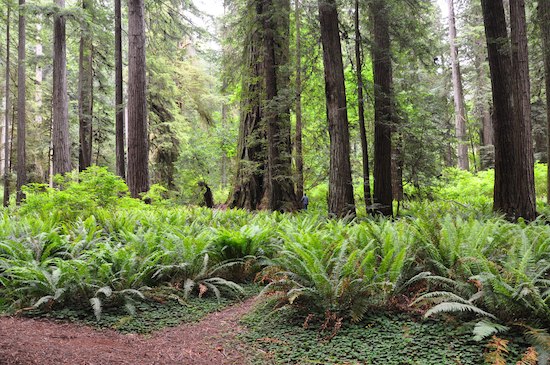Chapter 13
Earth Biomes

Coast Redwoods. Redwood National Park, California
Courtesy Michael Ritter
The stately Sequoia sempervirens, more commonly known
as "Coast Redwood" is one of the tallest trees on Earth.
The biogeography of Earth is expressed by the mosaic of biomes that occupy its land and waters. In this chapter we'll look at the characteristics of Earth's terrestrial biomes and their distribution. We'll investigate how human activities are changing the distribution and diversity of plant and animal species, and suggest how our changing climate may affect Earth's biomes.
Learning Outcomes
By the end of this chapter you should be able:
• Describe the characteristics of the 8 biogeographical realms.
• Describe the major terrestrial biomes and locate them on a world map.
• Explain how human activities are affecting terrestrial biomes.
Asses your knowledge of concepts important to this chapter by "Getting Ready for Earth Biomes". If you're ready to start this chapter, view a list of chapter topics by clicking "Topic Outline" or go directly to the first topic by clicking "Continue"
Previous | Topic Outline | Continue